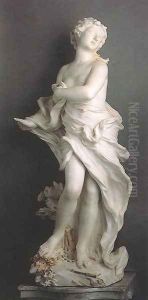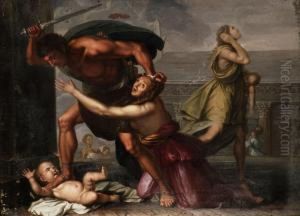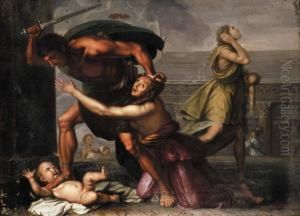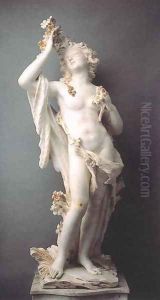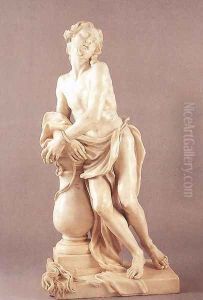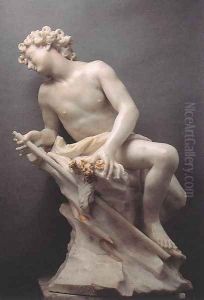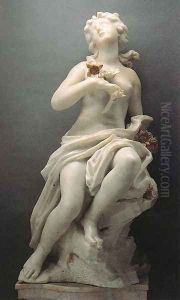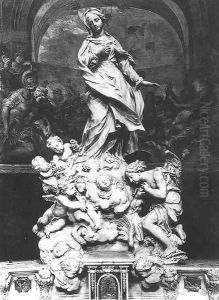Filippo Parodi Paintings
Filippo Parodi was an Italian sculptor and wood carver, considered one of the leading figures in the development of Genoese Baroque art during the seventeenth century. Born in Genoa in 1630, he initially trained with his father who was a wood carver, which helped him develop his early skills in the craft. However, Parodi's ambitions and talent surpassed the confines of his father's workshop, and he soon sought to expand his artistic education and experience.
He was deeply influenced by the works of Gian Lorenzo Bernini, the preeminent sculptor of the Baroque period. Although there is no evidence of direct tutelage, Parodi's style shows the clear impact of Bernini's dynamic compositions and emotional intensity. Parodi's sculptures are characterized by their dramatic use of light and shadow, a technique known as chiaroscuro, which was a hallmark of Baroque art.
During his career, Parodi worked on numerous churches and palaces in Genoa, creating altarpieces, statues, and other decorative elements that displayed his mastery of both marble and wood. Among his notable works are the Assumption of the Virgin at the Basilica della Santissima Annunziata del Vastato and the allegorical figures at the Palazzo Rosso in Genoa. His work was not limited to Genoa; he also received commissions from other Italian cities and from abroad, which helped to spread his fame.
Filippo Parodi died in Genoa in 1702, leaving behind a rich legacy that would influence the trajectory of Baroque sculpture in Liguria and beyond. His son, Domenico Parodi, was also an accomplished painter and architect, and together they contributed significantly to the artistic heritage of the Baroque era in Italy. Parodi’s work is still admired today for its blend of dynamism, naturalism, and emotional expression.
